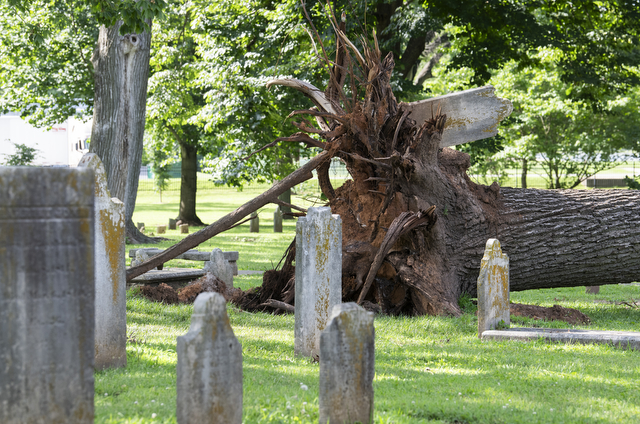Learn to Use light and Photograph Right
Published 12:00 am Monday, November 7, 2011

- Late afternoon sunset provides natural light. Photo by Amber Flowers, SoulGazePhotography.com.
On a crisp November morning, the fog slowly glides across the surface of a solitary pond. The sky is quickly becoming brighter as the sun begins to rise for the day. You have your camera on a tripod and wait patiently for just the right moment. You will only have a few seconds or minutes to capture the shot you arrived so early to obtain. Suddenly, the orange glow of the sunrise begins to invade the clouds, trees and landscape before you. The sun’s morning light casts surreal shadows of orange and black across the pond. The fog begins to ascend faster and animals are starting to awaken. Suddenly the moment you have been waiting for arrives. Clicking your shutter, you capture the scene of a glorious sunrise just as you intended.
Maybe this was a bit dramatic, but for serious photographers this is a reality. Serious photographers strive for the best possible images and are willing to get up early or brave crazy locations and conditions. Their hard work and perseverance, results in compelling photography with highly profiting portfolios via clients, stock images and licensing. Better images due to better lighting applies to all photographers of all skill levels regardless of camera type and to all types of photography from landscapes to portraits and beyond. Learning to use light properly can improve your photography just like a superior camera can improve sharpness and detail. In fact, knowing how to properly utilize the light can do more than that. Modern cell phones have greatly improved, but even they can produce photos nearly as good as a professional digital camera with the right lighting. A great example of how you shouldn’t be limited by your camera is in the online article, “The iPhone Fashion Shoot by Lee Morris” with accompanying photos and videos available here: http://www.fstoppers.com/iphone. The results are inspiring and should show all photographers just how much is actually possible with proper lighting.
Camera settings also matter, so if your camera has a manual mode, practice how to use it via adjusting the shutter speed, aperture and ISO. These three together can be adjusted to control the brightness (exposure) of the image and sharpness (depth of field) of your subject and also can blur or freeze action. For instance, you would commonly want portraits to be in focus with a blurry background (bokeh), but would want a landscape to be in focus across the frame as much as possible. ISO helps photographers by allowing more light to the sensor so you can use faster shutter speeds. The only disadvantage is the higher the ISO the more grain and loss of detail. Many options for noise reduction software are available, such as built into Adobe’s Lightroom 3, but it’s best to never go higher than necessary to capture the shot as intended. Ensure you get the shot without sacrificing image quality. The more you learn how to use these three settings together, the better your shots will be. There are also other options such as exposure compensation or even bracketing for HDR shots.
When capturing a landscape, be mindful of the time of day. Harsh midday lighting is rarely complimentary to a scene and higher levels of atmospheric haze and human pollution degrade the location’s natural beauty. Landscapes, just like people, look the most serene and magical during the glow of sunrise, sunset and during early morning and afternoon. This doesn’t mean you can’t capture great photos during midday, just that you won’t have the advantage of the softer and warmer ‘golden hour’ lighting.
For portraits, many of the landscape lighting tips apply. If you must shoot during midday, using reflectors and screens to filter the light can help fill harsh shadows. If you’re on a budget, there are many free examples of do-it-yourself reflectors using car window reflectors or thin sheets draped on a PVC frame. There’s no right or wrong here, what matters is that you are satisfied with your results. Alternately, research using off-camera flash or other alternative lighting or bending the light via diffuser attachments. You can also bounce your flash off ceilings when indoors for more even lighting. When outdoors, use the sun and natural light to your advantage. Properly chosen settings can expose your scene just as your eyes see it.
When capturing portraits, lighting can be the difference between a great shot with impact and a boring snapshot. Not only are certain angles unflattering, but the light can be your best friend or your enemy depending on how you utilize it. Experiment with camera angles and learn how to flatter your subjects. Shooting from below can create the illusion of a larger person, while shooting from above can create the illusion of a smaller person. This requires practice to ensure your using the proper angle for each body type. Light coming from above is flattering and natural compared to harsh unnatural direct lighting or light from below. Be mindful also of posing when capturing portraits. Shadows can add weight to a subjects face or worsen dark-circles under the eyes, but proper lighting can actually slim and add youth to your subject. Consider also the shape of your lighting if you wish to capture those pretty catch lights in someone’s eyes. Naturally lit portraits using square windows will result in square catch-lights while those with a beauty dish or diffused flash can create the round catch-lights most people prefer. A popular portrait trick is to place the main light source (such as the sun) behind your subject; you can then fill the shadows with your alternative lighting source for dramatic portraits and shots of manmade subjects. This allows you to properly expose both your subject and background such as a sunset or sunrise.
Over time, with practice you will learn how to control the light to create the scene of your choosing. You can turn day into night and night into day via the right settings and off-camera lighting. If you want better images, take the time to practice with the equipment you have and learn to use light and photograph right. With better lighting, you will have sharper and more dramatically appealing images. The results are illuminating!
 About the author: Amber Flowers, Owner of Soul Gaze Photography, is a photographer, digital artist and writer most known for her infrared photography and the ‘fine art’ feel to her work. She is Founder of Southern Kentucky Photographer’s Club and a member of The League of Creative Infrared Photographers. Amber resides in Glasgow KY with her Husband, two children and several pets. Learn more, ask questions or purchase fine art photography: www.soulgazephotography.com
About the author: Amber Flowers, Owner of Soul Gaze Photography, is a photographer, digital artist and writer most known for her infrared photography and the ‘fine art’ feel to her work. She is Founder of Southern Kentucky Photographer’s Club and a member of The League of Creative Infrared Photographers. Amber resides in Glasgow KY with her Husband, two children and several pets. Learn more, ask questions or purchase fine art photography: www.soulgazephotography.com






